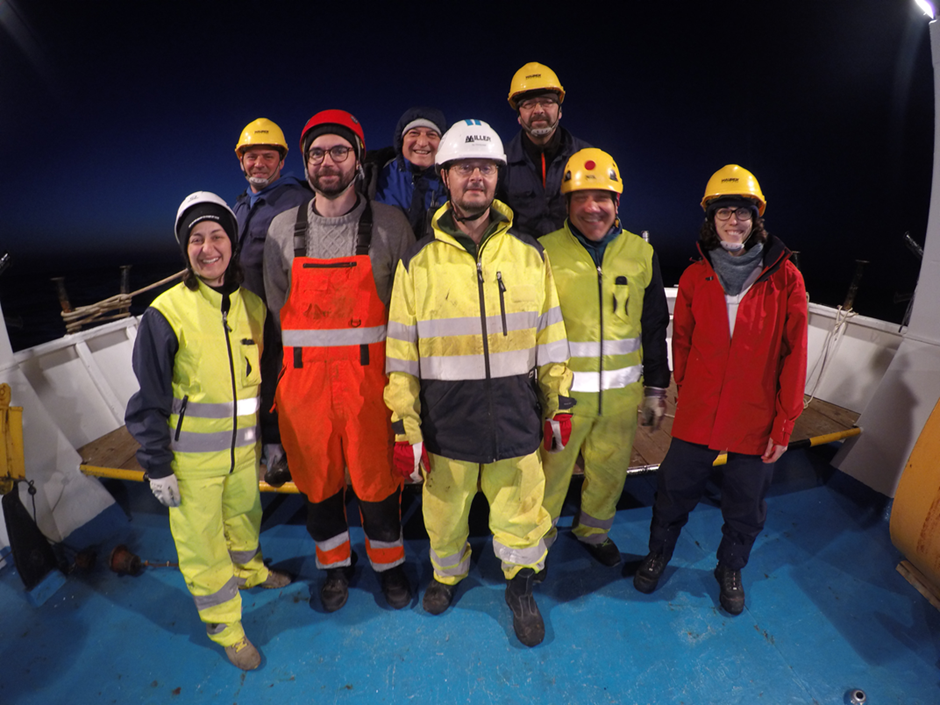The oceans absorb 30% of the atmospheric CO2, representing one of the largest carbon “reservoirs” in nature and a fundamental ally in the mitigation of climate change. The zooplankton community is a key player in regulating the efficiency of atmospheric CO2 uptake in the ocean: it transports large quantities of Carbon (C) from the ocean surface to the seabed by its vertical movement along the water column and a large amount of C remains in the deep ocean as sediment through its sinking faeces, moults and carcasses. Unfortunately, nowadays this process is potentially threatened by microplastics pollution.
Researchers at the British Antarctic Survey (BAS), United Kingdom, are working on the project CUPIDO – “CalcUlating the strength of the Plastic pump In counteracting the Deep export of Oceanic carbon” – to clarify the impact of plastics on the ocean and to investigate the mechanisms through which microplastic pollution affects the capability of zooplankton to contribute to carbon sequestration. Unlike the Southern Ocean where plastic pollution is relatively low, the Mediterranean Sea contains a higher concentration of plastics due to the large population inhabiting its shores. CUPIDO aims to study the different areas to better understand the impact of microplastics.
Part of this project is taking place at the EMSO ERIC Italian node South Adriatic Sea, within the EMSO Physical Access Programme, where the CUPIDO team will address the hypothesis that zooplankton and food web associated processes play a major role in promoting the sinking of plastic through the water column, resulting in a slowing of the Biological Carbon Pump (BCP), the process that contributes to the taking up and storing of carbon dioxide from the atmosphere.
The group will investigate this hypothesis, with four main actions:
- Install an ocean array to determine in situ temporal variability in oceanic plastic particle characteristics with regards to their varying tendencies either to float or sink;
- Measure the flux of plastics at different ocean depths and how this varies seasonally;
- Identify and quantify the mechanisms by which zooplankton facilitate the penetration of plastic from the surface to the deeper layers of the ocean;
- Build up an ecological model to assess the strength of the Plastic Pump in counteracting the BCP, with particular attention to identifying where plastic accumulates and affects how C is transferred to the depth.
Specifically, thanks to the development of a unique device, the Ocean Plastic Incubator Chamber (OPIC), designed by BAS and deployed on the mooring platform at the EMSO South Adriatic Sea Regional Facility, the team will study the plastic degradation in the open ocean, evaluating how exposed pre-selected plastic particles (meso- and microplastics) in the natural marine environment alter over long time scales: in fact, although marine plastics are persistent pollutants they do gradually erode through continuous buffeting by currents, exposure to light, and biodegradation by microorganisms. As this weathering alters plastic properties – including colour, buoyancy, and toxicity – it may affect how plastic pervades marine ecosystems. Now the group is working on the first set of samples collected in spring 2023.

Furthermore, the team deployed some floating sediment traps at different depths (i.e 50m, 100m, and 150m) to investigate microplastic flux variability at daily scale. The aim it to identify microplastic accumulation along the water column and the interaction of this pollutant with the carbon flux. The experiment will be repeated in the spring and autumn to characterise the change in daily microplastic export during different seasons.


To learn more about BAS, visit the website
Find out more about the CUPIDO project:
https://www.youtube.com/watch?v=Ivm4H3Lpr8A&t=95s
https://www.bas.ac.uk/project/cupido/
For more details about the South Adriatic Sea Regional Facility, click here
Have a look at the EMSO Physical Access Call 2023, there is still time to apply!
Photo 1: Cruise team on the DALLAPORTA research vessel including some members of the CUPIDO team.
Photo 2: OPIC, Ocean Plastic In-situ Incubator Chambers, first deployment in the Mediterranean Sea.
Photo 3: Floating trap unit with 4 collector cylinders with open close mechanism (left). Each unit is attached on a line connected to a drifting buoy, deployed at different depths (right).
Photo 4: A CUPIDO member working at the FTIR (Fourier transform infrared spectroscopy) at BAS to characterise the microplastics sampled in the Mediterranean Sea (i.e. Polymer identification). The chemical characterization of the found microplastic fragments will allow to understand the potential source and fate of this pollutant.
Authors: Clara Manno (BAS), Sara Pero (EMSO ERIC)


